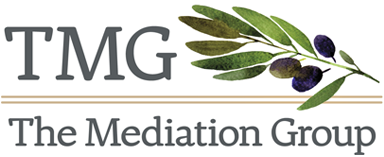Workplace Harassment and Discrimination
The workplace can become challenging when allegations of harassment or discrimination are made, or when toxic behaviors invade the work culture. All employees have the right to work in an environment free of harassment and discrimination.
What is workplace discrimination? Discrimination in the workplace occurs when an individual is treated differently or less favorably than others because of their identity or perceived identity.
What is workplace harassment? The EEOC defines harassment as a form of employment discrimination – specifically, harassment is unwelcome conduct based on any number of protected classes (see below).
Workplace Discrimination: Protected classes vs. Non-protected classes
There are many types of employment discrimination that can occur, and the range of available resolutions will vary based on whether the individual is a member of a protected class or not.
A protected class is a group of people who have special legal protection against discrimination in the workplace based on shared characteristics. Non-protected classes include any quality or characteristic not explicitly protected by law but which may lead to a person experiencing discrimination. These may include the following:
|
Protected classes* |
Non-protected classes |
|
|
* Source: Mass.gov (Note: Protected classes may vary from state-to-state and at a national level)
How does workplace harassment and discrimination impact employers and employees?
Workplace discrimination or other unlawful conduct is serious and creates an environment that is neither safe nor healthy. Employers must respond swiftly and insure everyone involved is treated with professionalism and respect, avoiding any actions which may be perceived as retaliation against those alleging discrimination.
Employees who feel they have been subjected to some form of discrimination or harassment are likely to be less engaged at work, suffer from higher levels of stress and absenteeism, and be less productive. This can negatively impact others in the work environment. Workplaces that enable or tolerate harassment and discrimination not only risk having employees who are less productive, but also foster a socially unjust culture.
Allegations of discrimination or harassment in the workplace create a challenging environment that may need professional guidance and training. The Mediation Group’s team of professionals supports organizations and individuals through prevention education, training, and formal investigations.
Preventing Workplace Harassment
Education and training are keys to preventing workplace harassment. We can work with your HR department, board of directors, in-house counsel, or independent consultants to conduct a customized need analysis. Training may include:
Review of sexual harassment/discrimination policies and procedures
Onboarding policy training
Workshops on communication and having difficult conversations
Options for Workplace Harassment and Discrimination Training
We can provide a customized training and consulting plan to address your specific needs. This plan begins with a free expert consultation to discuss specific issues and develop a plan that will deliver high-quality outcomes.
Training Options:
In-person/Virtual/Hybrid
Full-day/Self-Paced Modules
Our Experts Specializing in Organizations










